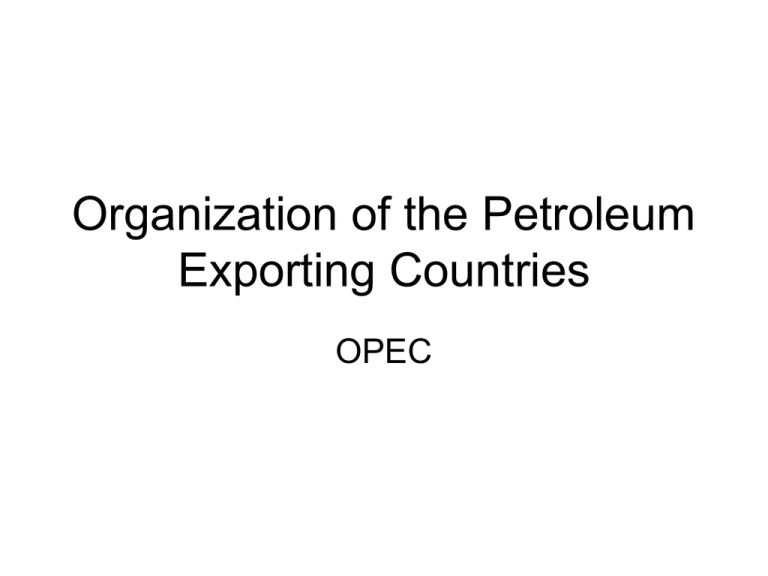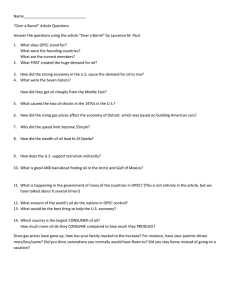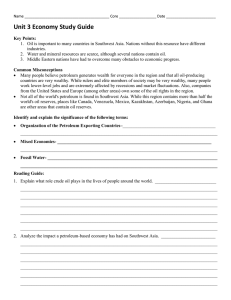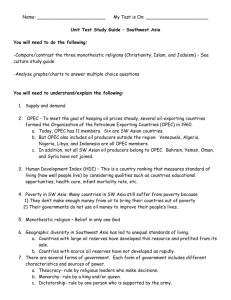Slide 1
advertisement

Organization of the Petroleum Exporting Countries OPEC Purpose of OPEC • The mission of the Organization of the Petroleum Exporting Countries (OPEC) is to coordinate and unify the petroleum policies of its Member Countries and ensure the stabilization of oil markets in order to secure an efficient, economic and regular supply of petroleum to consumers, a steady income to producers and a fair return on capital for those investing in the petroleum industry. OPEC Members • Founded in Baghdad, Iraq, with the signing of an agreement in September 1960 by five countries namely Islamic Republic of Iran, Iraq, Kuwait, Saudi Arabia and Venezuela. They were to become the Founder Members of the Organization. Map of Founder Members OPEC Members • These countries were later joined by Qatar (1961), Indonesia (1962), Socialist People’s Libyan Arab Jamahiriya (1962), the United Arab Emirates (1967), Algeria (1969), Nigeria (1971), Ecuador (1973), Gabon (1975) and Angola (2007). • From December 1992 until October 2007, Ecuador suspended its membership. Gabon terminated its membership in 1995. Indonesia suspended its membership effective January 2009. • Currently, the Organization has a total of 12 Member Countries. Map of ALL Member Countries How Much is Left? • According to current estimates, more than threequarters of the world's proven oil reserves are located in OPEC Member Countries, with the bulk of OPEC oil reserves in the Middle East, amounting to 70% of the OPEC total. • OPEC Member Countries have made significant additions to their oil reserves in recent years, for example, by adopting best practices in the industry. As a result, OPEC's proven oil reserves currently stand at well above 1000 billion barrels. • During the period 2000-2009, OPEC Member Countries added 242 billion barrels to their total oil reserves, substantially more than the reserve additions made by other crude oil producers. Why Use Oil? • Refining is the complex series of processes that manufactures finished petroleum products out of crude oil. While refining begins as simple distillation (by heating and separating), refiners must use more sophisticated additional processes and equipment in order to produce the mix of products that the market demands: – Fuel oil, used to power large ocean-going ships – Jet fuel, kerosene, home heating oil and diesel fuel – Gasoline Top Oil Consumers Rank Consumers Total Oil Consumption 1. United States 20.5 2. China 6.5 3. Japan 5.4 4. Germany 2.6 5. Russia 2.6 6. India 2.3 7. Canada 2.3 8. Brazil 2.2 9. South Korea 2.1 10. France 2.0 (millions of barrels per day) Includes all countries that consumed more than 2 million barrels per day in 2004. Source: Energy Information Administration (EIA). www.eia.doe.gov/emeu/cabs/ . Top Oil Consumers Information in this presentation from: •OPEC www.opec.org •University of Delaware Sea Grant ©2004 University of Delaware •Energy Information Administration (EIA).



